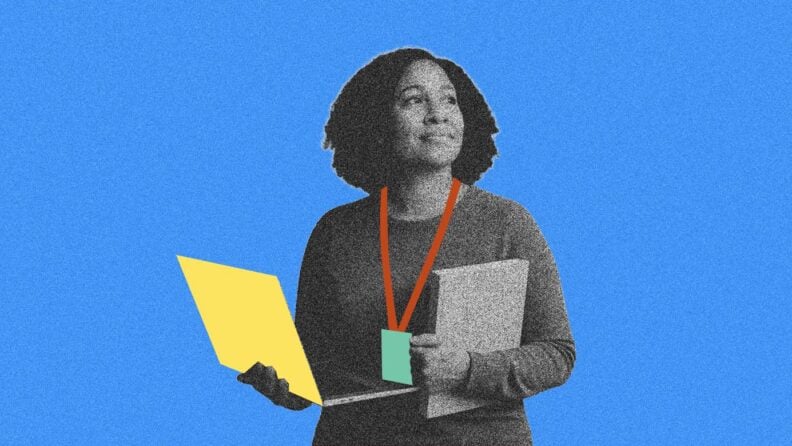We are living in unprecedented times... again.
The economy continues to make wild swings, and uncertainty is the general vibe. Understandably, this makes companies wary about spending.
We have been through something like this fairly recently, though for different reasons. When Covid hit, the economy tanked, and many companies started hacking away at expenses in an effort to survive. And now, it's happening again.
Groundhog Day
One of those “expenses” that got cut was learning and development. I saw companies stop all programming – even programming that they had already paid for – to manage the perception that spending money on learning was not essential as to actually save money.
As many of those organizations emerged from the pandemic, they found that cutting learning put them into a different kind of deficit. Their leaders’ skills did not keep up with the changing business environment. People’s growth stagnated, and companies found that their teams' capabilities had deteriorated.
They learned a tough lesson: rather than being an expense, people development is one of the most important investments that a company can make.
Don’t let this turn into a Groundhog Day, slashing learning only to find that you have created even bigger problems by stalling your companies’ ability to adapt, grow, and win both now and in the future.
When you cut your L&D budget, you actually:
- Encourage your people to mentally check out. When people feel like the company has stopped investing in them, they stop investing in the company.
- Make your workforce irrelevant. You end up with a team with Blockbuster skills in a Netflix world.
- Suffocate your ability to innovate. Companies that don't invest in learning become rigid, bureaucratic, and about as innovative as a flip phone.
- Say goodbye to your best talent. Your top performers have options, and they will start looking for companies that actually care about their growth.
The numbers don't lie: Global employee engagement has plummeted to 21% (the lowest since the pandemic started), costing the global economy an estimated $8.9 trillion annually according to Gallup.
Meanwhile, LinkedIn reports that 49% of learning professionals say that their executives are worried employees don't have the skills to execute business strategy.
Smart Companies Shift Their Mindset From Expense to Investment
What if you shifted your organizational mindset from thinking about learning and development as an expense to it being one of the highest-impact investments you can make?
New Level Work's 2023 study found that companies see an average return of $7 for every dollar invested in leadership development. That is the kind of ROI that will make any savvy investor happy.
But the benefits go beyond dollars and cents:
- Your people actually perform better
- Engagement goes up when people feel invested in
- Your organization becomes stronger and more resilient under pressure
- You build a bench of future-ready leaders poised to step up someone leaves
- Internal mobility becomes your secret weapon during hiring freezes
- You create a culture where growth is the expectation, not the exception.
Breaking Through the "We Can't Afford It" Mindset
Let's address the common excuses for not investing in learning during tough times.
The C-Suite doesn't see the value
Then make it impossible for them to ignore. Stop talking about learning as this fluffy, feel-good initiative by connecting it directly to business outcomes and what your company needs in the next 3-5 years to succeed. Show them the data. Make it about strategy, not satisfaction.
We need to do more with less.
"Less" doesn't have to mean "nothing." If you cut back to nothing, you get nothing. Instead, be smarter, more strategic, and more creative with your approach. Do more with what you already have.
Learning isn't part of our culture
If that is true, then it's time to change the culture. Start by making development a requirement, not a nice-to-have. Make development a metric that is rewarded on reviews, and celebrate people’s growth publicly.
The key is to change the mindset from "learning is an expense" to "not learning is a career and business staller." The goal? To create the culture of learning we often talk about.
The Smart Money Approach: Strategic L&D on a Budget
Even with limited resources, you can still deliver powerful learning experiences. Odds are you are not future-focused enough in your priorities or leveraging the learning tools and resources that already exist.
Focus on what actually matters
Not all learning is created equal. Use data to identify the skills that will have the biggest impact on your business goals now and in the future. Prioritize learning that:
- Drives innovation and adaptability because the market isn't slowing down for you
- Advances your strategic objectives not just random “feel good” initiatives
- Builds your leadership pipeline because your current leaders won't be here forever–or be able to keep up with future needs.
Think about tomorrow, not just today
Yes, you need to address today's skill gaps. But if you're only focused on current needs, you're already behind. What skills will your people need in one to three years? Start building those now, while your competitors are also playing catch up.
Maximize what you already have
Before you spend another dollar, audit what you're already paying for:
- Squeeze every drop from your current platforms. Most companies use maybe 20% of their learning tech capabilities. Call your reps and get a full walkthrough. Even your Employee Assistance Program likely offers eLearning resources that you have never tapped into.
- Redistribute unused licenses. If your approach after issuing your LinkedIn Learning licenses was to set it and forget, it’s time for a refresh. Reassign them to people who'll actually use them..
- Repurpose existing content. Turn those team offsite materials, town halls, and recorded sessions into on-demarnd toolkits and micro-learning gold.
- Go asynchronous where it makes sense. Not everything needs a live facilitator. Save the face-to-face time for high-value interactions.
- Leverage your internal expertise. Your strongest leaders have knowledge worth sharing. Put them to work developing others in engaging TedTalk-style presenations or leader panels that draw employees with coveted access.
Scale intelligently
Think modular. Build learning components that can be combined in different ways for different audiences:
- Create learning pathways based on role, level, or development need
- Bundle resources into on-demand toolkits
- Standardize onboarding to create consistent foundations and cohort experiences
- Invest in scalable formats like mentoring programs, lunch-and-learns, and fireside chats.
Be strategic about your investment
Not everyone needs the same training. Focus your limited resources where they'll have the biggest impact:
- New hires: Consistent and robust onboarding that sets them up for success
- New managers: Foundational leadership training aligned to your competencies
- High potentials: Stretch assignments that accelerate their growth
- Utility players: Cross-functional assignments and job rotations that build organizational agility
- Technical experts: Cutting-edge skills training that keeps you competitive.
Make Learning Your Competitive Advantage
When the economy gets tough, most companies hunker down and wait for the storm to pass. Smart companies use that time to build capabilities that will dominate when conditions improve.
Learning and development isn't just about employee satisfaction or checking compliance boxes. It's about building an organization that can innovate, adapt, and execute at the highest level, especially when everyone else is cutting corners.
The companies that emerge stronger from economic uncertainty aren't the ones that cut deepest. They're the ones that invested wisest.
You have a choice. You can be the company that cuts learning to save pennies, or be the company that invests in people to secure the future.
Your future self—and your future bottom line—will thank you for choosing wisely.
What's Next?
Want more expert commentary and insights like this? Sign up for the People Managing People newsletter and you'll get analysis of all the latest trends and technology along with expert advice, straight to your inbox.


